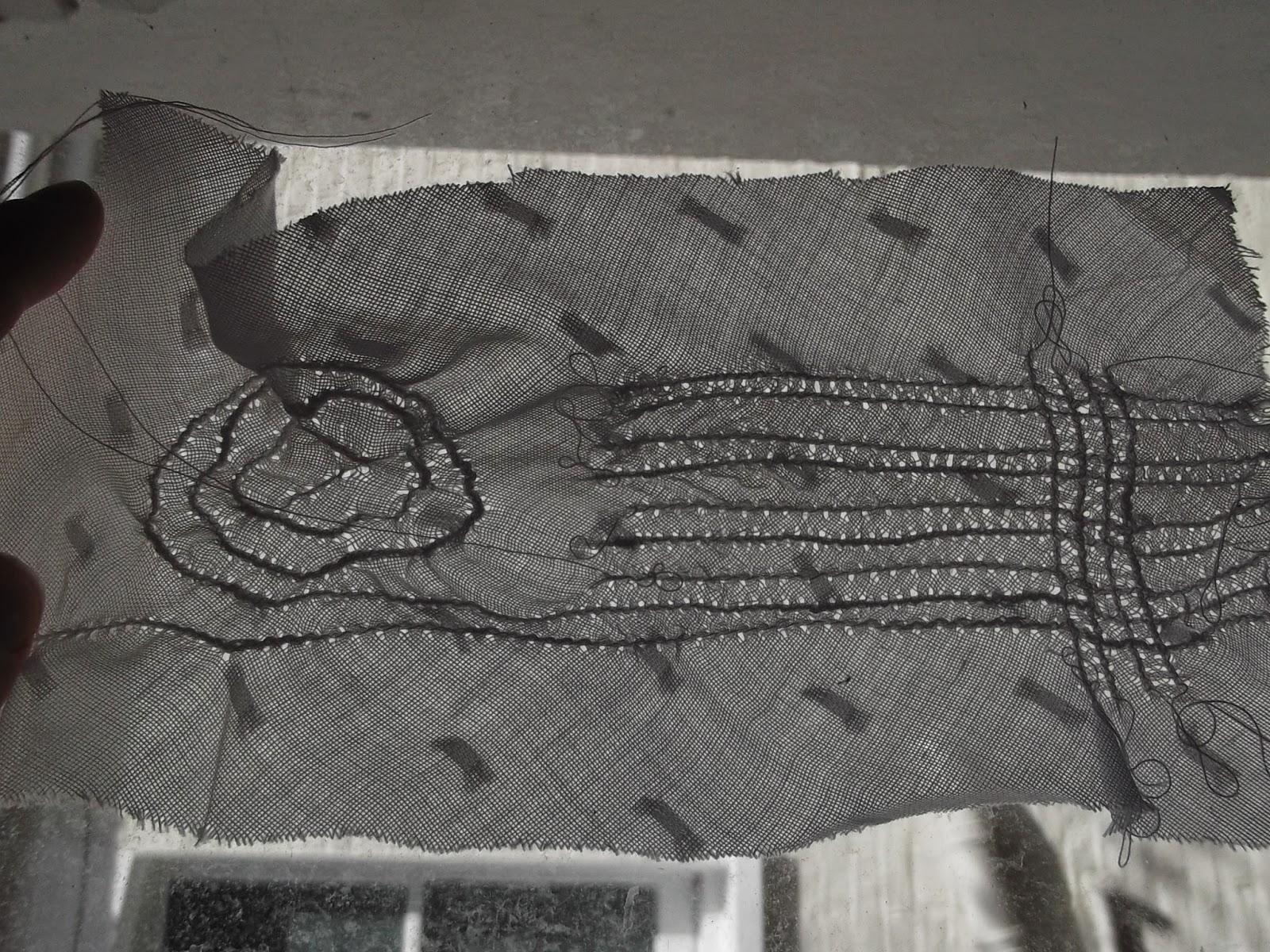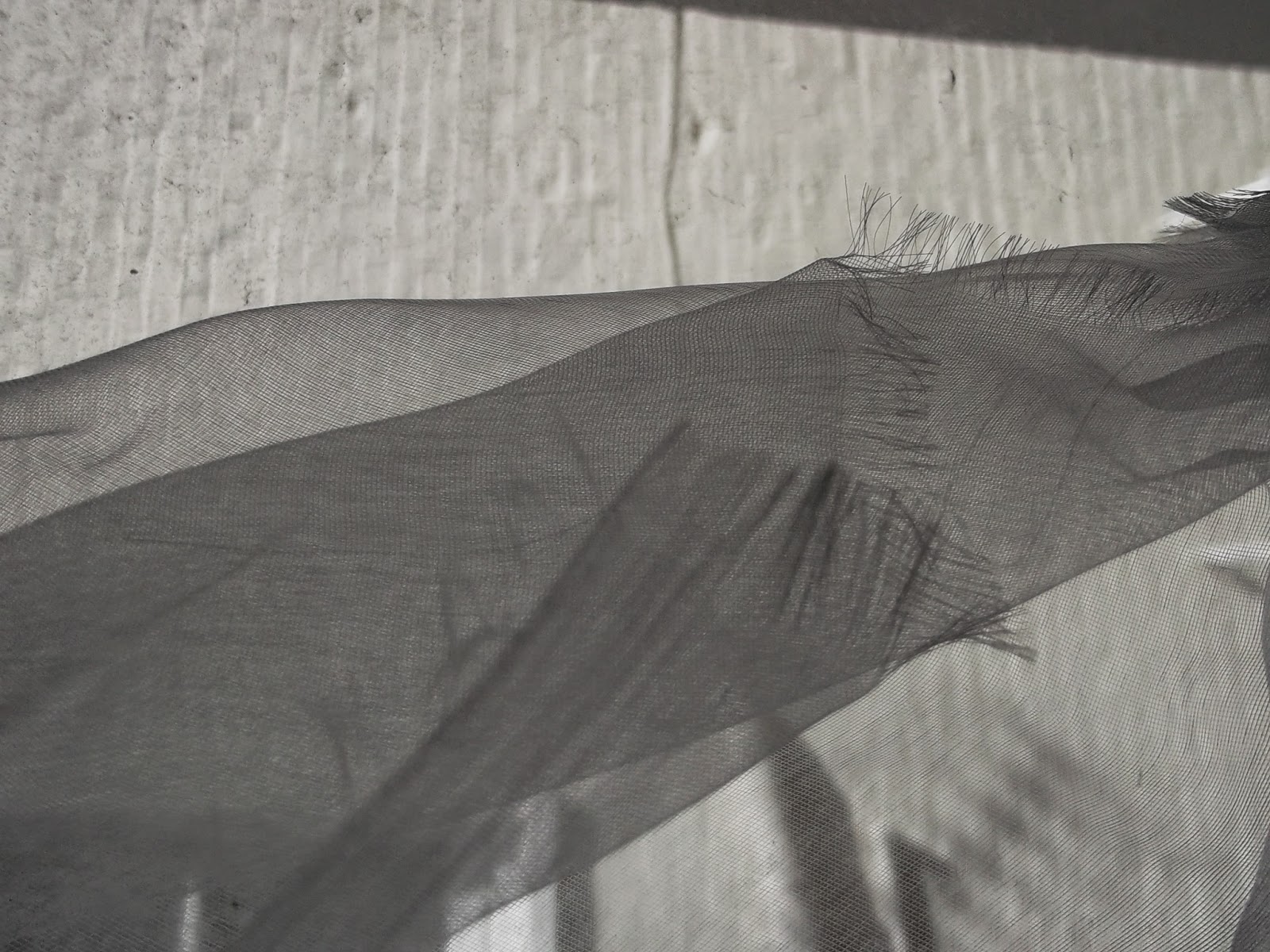All these fabrics are white, but show up grey against the light.
Muslin folds quite sharply so it may be possible to control the shadows more than with man-made fibres.
The weave gives a distinctive texture.
Polyester netting from around our Christmas tree.
The netting is nicely irregular.
More than one layer makes a darker colour.
The edges are frothy like sea foam.
Fine cotton with a pattern of knots.
The pattern of knots is regular so any folding of the fabric distorts it.
The woven texture is accentuated by the light shining through it.
More than one layer makes it darker.
(You can see next door's window at the bottom of this one)
Bubble wrap.
Again, the regular pattern is distorted when it isn't flat against the window, and brings variations in shadow and light.
The circles have their own individual patterns.
Folded muslin gives lots of control over the degree of shadow, and the top 4-layer fold is surprisingly dark.
The grain of the weave is attractive and irregular, and very directional.
This one is of a polyester fabric. The layers are more subtly different in tone from each other.
The fringe threads seem to be darker than they 'should' be when they overlap with each other.
This is mixed fibre ironed into box pleats.
Again there would be room to control this effect.
I like the way the edge is sharp and shapely.
The texture is again different - rather formal like upholstery.
This is white vest fabric folded on itself.
The folded part looks as if it's the shadow of the other part, and appears less regular.
I thought I would try some 'blackout' fabric with holes in it.
This is the result.
There is no texture to this fabric at all.
Interestingly, the fabric actually appears less dark than many of the others (especially the vest fabric).
The light holes are therefore less of a contrast than I expected.
 So I tried making holes in a less opaque fabric using a sewing machine.
So I tried making holes in a less opaque fabric using a sewing machine.This is how it turned out.
Of course I used white thread, which looks black against the light, and contrasts with the rows of little white holes.
I think there might be some mileage in this idea....
Other interest from this one is the way the triangles array round gathered fabric. When we gather fabric in clothes or upholstery there is a sort of convention that we ignore these triangles. But what if I made a point of emphasising them?
This is what this piece of sewing looks like with the light in front of it. I think the next step is to experiment with dissolving fabric in the light of what I have learned today.
And finally, one with colour.
A piece of pongi silk with silk paints.
What I see is that all the colours are softer/greyer,
and that folds seem to make the colour more intense.
The place where it overlaps the window outside is interesting because it actually makes the window more interesting looking.
I'm guessing that overlapping different colours will have an additive effect, but that will have to wait until I have some more time.
As will printing photos onto organza...











No comments:
Post a Comment